#petsamo
Text
Princess Ragnhild of Norway: A Life of Contrasts.
Princess Ragnhild of Norway was born on 9 June 1930 at the Royal Palace in Oslo, where her parents, Crown Prince Olav and his Swedish-born wife, Crown Princess Märtha had decamped some three weeks before, as a fire had almost destroyed their family home at Skaugum, in the village of Asker, west of Oslo. Ragnhild was the first Norwegian Princess born on Norwegian soil in over six hundred years. In…
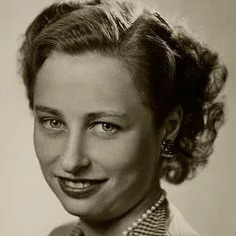
View On WordPress
#brazil#crownprinceolav#crownprincessmärtha#erlinglorentzen#finland#germaninvasion#hudsonriver#hydepark#kinghaakon#kingharaldofnorway#Morgenstierne#norge#norway#petsamo#pook&039;shill#princessastrid#princessragnhild#queenmaud#ragniØstgaard#roosevelt#springwood#sweden#thewhitehouse#ussamericanlegion#washingtondc#worldwartwo
0 notes
Text



Nothing new indeed. Here are just some russified Finnish place names from the Karelian Isthmus:
Antrea -> Kamennogorsk
Enso -> Svetogorsk *
Heinjoki -> Veshchevo
Johannes -> Sovetsky
Jääski -> Lesogorsky
Kanneljärvi -> Pobeda
Kaukjärvi -> Kamenka
Kirvu -> Svobodnoye
Kivennapa -> Pervomayskoye
Koivisto -> Primorsk
Koivistonsaari -> Bolshoy Beryozovy
Kuolemajärvi -> Pionerskoye
Kähäri -> Goncharovo
Käkisalmi -> Priozersk
Lavansaari -> Moshchny
Metsäpirtti -> Zaporozhskoye
Raivola -> Roshchino
Rautu -> Sosnovo
Räisälä -> Melnikovo
Säkkijärvi -> Kondratyevo **
Terijoki -> Zelenogorsk
Uuras -> Vysotsk
Uusikirkko -> Polyany
Vahviala -> Yashino
Valkjärvi -> Michurinskoye
Vuoksenranta -> Ozyorskoye
Ylä-Urpala -> Torfyanovka
* The name lives on in the name of the company Stora Enso
** You may recognise the name from the song Säkkijärven polkka
Place names in the ceded Petsamo, Salla, and Ladoga Karelia, have largely been left alone.
The population of the ceded Finnish territories was also completely replaced.

Please feel free to list more russified places from other countries.
#war in ukraine#russian war on ukraine#russian aggression#russian invasion#russia is a terrorist state#russian imperialism#russian colonialism#cultural genocide#russification#suomi#finland#historia#*
324 notes
·
View notes
Text

The Finnish Border Guard celebrates its 105th anniversary today.
Colonel A. Pennanen, October 26, 1941.
Antti Pennanen (1903-1989) served as the commander of Detachment Pennanen in Petsamo during the Winter War. In the Continuation War, he was responsible for the same area as the commander of the so-called Men of Lutto of the Separate Detachment Petsamo (Er.Os.P). In the Lapland War, Pennanen and his men saved, among other things, the nationally important industrial facilities in Kemi.
After the wars, Pennanen served as the commander of the Lapland Border Guard and later as the chief of the Border Guards, rising to the rank of lieutenant general.
••••••••
Rajavartiolaitos viettää tänään 105. vuosipäiväänsä.
Eversti A.Pennanen, 26.10.1941.
Antti Pennanen (1903-1989) toimi talvisodassa Petsamossa osasto Pennasen komentajana. Jatkosodassa Pennanen oli vastuussa samalla alueella Petsamon erillisosaston ns. Luton Miesten komentajana. Lapin sodassa Pennanen miehineen pelasti muun muassa Kemin valtakunnallisesti tärkeät teollisuuslaitokset.
Sotien jälkeen Pennanen toimi Lapin rajavartioston komentajana ja myöhemmin rajavartiostojen päällikkönä kohoten kenraaliluutnantiksi asti.
••••••••
[ sa-kuva | 61348 | H. Roivainen ]
#wwii#jhlcolorizing#wwii history#colorizing#ww2history#suomi#finland#worldwar2#worldwartwo#ww2photos#wwiihistory#ww2 worldwar2 wwii#worldwar#rajavartiolaitos#war history#historia#world war 2#war#suomisodassa#colourized#colourised#colorized
14 notes
·
View notes
Text

A captured Soviet OT-130 flame-tank in Finnish service during the Battle of Petsamo, 1941
30 notes
·
View notes
Text
Over the past few weeks, suspicious drone sightings have been made near infrastructure sites in various parts of Finland, reports Ilta-Sanomat.
According to the paper, sightings have been made, often at night, by members of the public in Mikkeli and Savonlinna in the eastern part of the country, and at Mynämäki in the southwest.
Leena (no surname given), who was staying at her cottage in Mynämäki in the Southwest Finland region, told IS that she and her husband spotted a drone in the middle of the night from their terrace. While sitting there, the couple noticed a drone flying from the direction of a neighbouring cottage.
"We were very surprised to see that a few moments later it flew over us again in the same way. It was pretty low both times. All we could see were the lights," Leena said.
According to Leena, there are transmission lines owned by the Caruna power company near the cottage.
Rene in Savonlinna, also reported drone sightings near a large power line close to the Russian border. What makes the sighting so unusual is that the drone flight took place in the dark at midnight, according to Rene.
He says there have been similar sightings in the area before, especially shortly after Finland joined Nato. He said he reported the sightings to the authorities.
In addition, there have been drone sightings in Mikkeli in recent weeks. Sirpa, who has a cottage at Haukivuori in Mikkeli, told IS that she had also seen a drone.
A rail line is located nearby, with regular timber and freight shipments.
The Caruna power utility told Ilta-Sanomat that it has received reports of "several sightings" of anomalous activity near its electricity networks over the past year.
According to Jarmo Ström, the company's operations manager, in addition to drone sightings, some of Caruna's remote sites have even been broken into. Other suspicious activity has also been seen near electricity distribution points.
Ström declined to give IS details of the dates or the exact number of break-ins. He did say that since the start of Russia's war against Ukraine, Caruna has stepped up its own surveillance around electricity its power network.
The Finnish Border Guard has not commented these drone sightings.
"The Border Guard does not comment publicly on individual sightings made by its own surveillance operations or reported by the public, unless they require wider security communication measures," Kimmo Ahvonen, head of the Border Guard's communications unit, told IS.
The Eastern Finland Police Department, on the other hand, confirmed that the police have received and are receiving a steady stream of sightings of various drones in their area.
80 years since Moscow Armistice
Savon Sanomat is among the papers carrying a brief STT news agency item which notes that Thursday marks the 80th anniversary of the end of the Continuation War, Finland's 1941-1944 conflict with the Soviet Union.
The war between Finland and the Soviet Union officially ended on 19 September 1944 with the signing of the Moscow Armistice, although a ceasefire had already come into force on 4 September.
Under the terms of the armistice Finland ceded to the Soviet Union not only the Karelian peninsula, the outer islands of the Gulf of Finland and the Salla-Kuusamo area, which had been lost in the Winter War, but also the Petsamo area and leased the Porkkalanniemi peninsula to the Soviet Union for 50 years.
In addition, Finland was obliged to pay new war reparations. The agreement required Finland to pay a total of 300 million US dollars in reparations over six years. The payment period was extended to eight years at the end of 1945.
The Moscow Armistice also obliged the Finns to remove the remaining Germans troops in Finland, leading to the Lapland War, September 1944 – April 1945.
Homeowners' costs skyrocket
Homeowers' expenses in Helsinki rose by more than 40 percent between 2020 and 2024, according to the economic and business daily Kauppalehti.
The property owners' association Kiinteistöliitto, the Finnish Real Estate Federation, provided the paper with a breakdown of its recent report that showed a sharp rise in costs of home ownership for all items measured, with the exception of the price of electricity.
A calculation based on a 90-square-metre flat in the capital found that annual homeowners' expenses went up 1,407 euros between 2020 and 2024, which is more than 117 euros per month, around 43 percent over the period.
The calculation includes property taxes, district heating, water, electricity and waste costs, but excludes private services such as management, accountancy and cleaning.
According to the federation's chief economist, Jukka Kero, the rise in recent years in Helsinki can be attributed in particular to increases in district heating, property tax and water costs.
"In 2022 and 2023, during the inflationary boom, private service companies also started baking increases into the prices charged to housing associations. Construction costs have also risen by almost 20 percent since the beginning of 2020. This is reflected in renovation costs for housing associations of all sizes," says Kero.
Lottery vs inheritance
Large numbers of Finns believe that winning the lottery is a more acceptable way to get rich than inheriting wealth, according to a study reported by Maaseudun Tulevaisuus.
A survey of more than 3,000 respondents by Danske Bank found that winning the lottery was cited by 29 percent of respondents as the most acceptable way to get rich. Entrepreneurship came second, with 22 percent of respondents saying it was the most acceptable path to riches.
Getting rich through inheritance was considered acceptable by only 18 percent of those polled.
The survey also shows that more people (39 percent) think that winning the lottery is the most likely way they will ever get rich compared with those (37 percent) who believe they can build wealth through regular savings and a frugal lifestyle.
2 notes
·
View notes
Photo
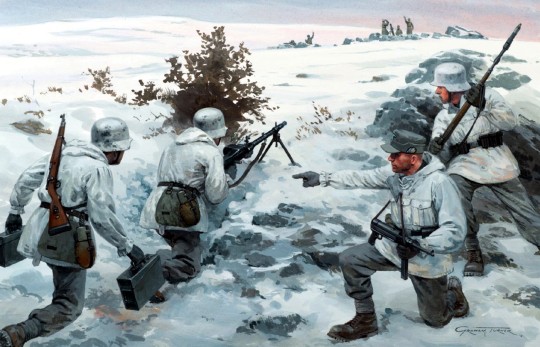
1944 10 10 Petsamo and Kirkenes - Graham Turner
German commander Hauptmann Walitschek with his 13th Company of the 136th Gebirgsheger Regiment on Lanhoe as they prepare to ambush a Soviet group on the morning of October 10, 1944.
25 notes
·
View notes
Photo

1943 03 Arctic Hunter - Richard Taylor
High in the Arctic Circle a bitter war of attrition was fought in freezing, unforgiving conditions, the desperate conflict played out against a majestic, awe-inspiring backdrop of beautiful ice-clad mountains.Me109s of 6./JG5 led by Oberleutnant Heinrich Ehrler, based at Petsamo in Finland, soar high above the towering peaks of ice capped mountains glistening in the cold polar air, March 1943. Their dawn patrol keeps constant vigil along the glacial fjords of the Norway’s far-northern coastline, as the majestic vista gives the battle-hardened Me109 pilots a brief moment of tranquility far removed from the grim and bitter battles being fought below.
31 notes
·
View notes
Note
i meant to ask, im fascinated by the idea of timo having an arm amputated, is there anywhere you've already talked abt that headcanon? id love to know the reasons behind it.
First and foremost, this is 100% a headcanon I adopted from Ask-Finny here on Tumblr. He gets full credit for coming up with this. Go look at his blog if you have not yet, I am obsessed with it.
But yes, there's actually a historical reason behind this hc. So the Winter War - everyone knows the winter war, the one where Russia was like "oh shit easy pickings watch me annex this baby nation," and Finns rocked their shit. Well. Finland still technically lost that war, and they were forced to give up land, as shown below.

Now, look at Finland for a second. If you squint, you can see what looks like a woman in a dress with her arms raised. And bc of this, even today, the northwest region of Lapland is still nicknamed the arm. This is important, I swear.
Well, along comes the Continuation War, an attempt on Finland's part to regain the territory they lost previously. They lost this war as well and had to surrender even MORE territory, shown below.

As you can see, all of Petsamo (the left arm) is gone. So Finland losing his left arm is, in my mind, a metaphor for the loss of his land.
And, in simple terms, the arm wasn't amputated. Russia literally just tore it off of him. I think Russia would have considered it a punishment or a warning not to try anything like this ever again.
6 notes
·
View notes
Text

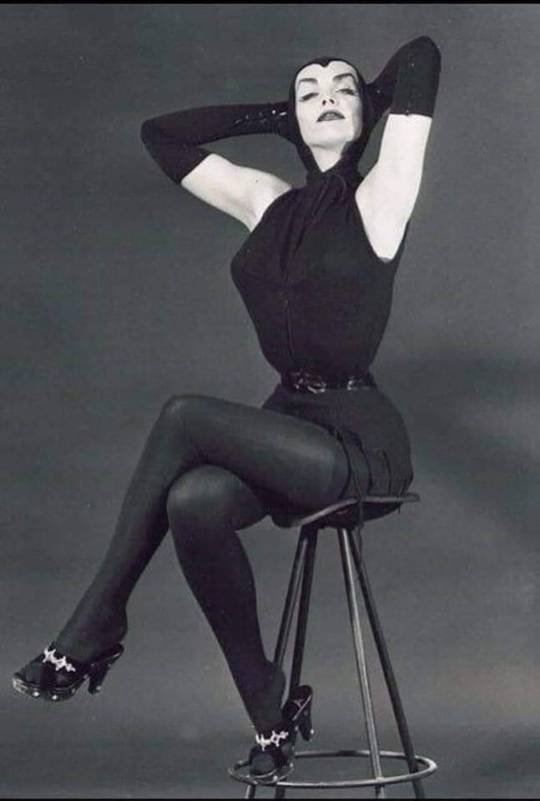
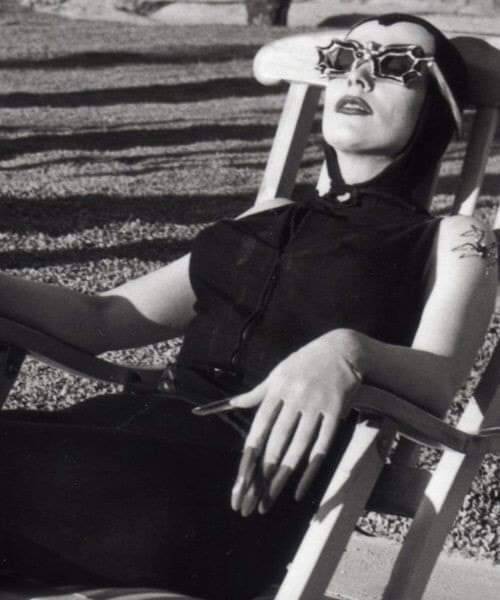
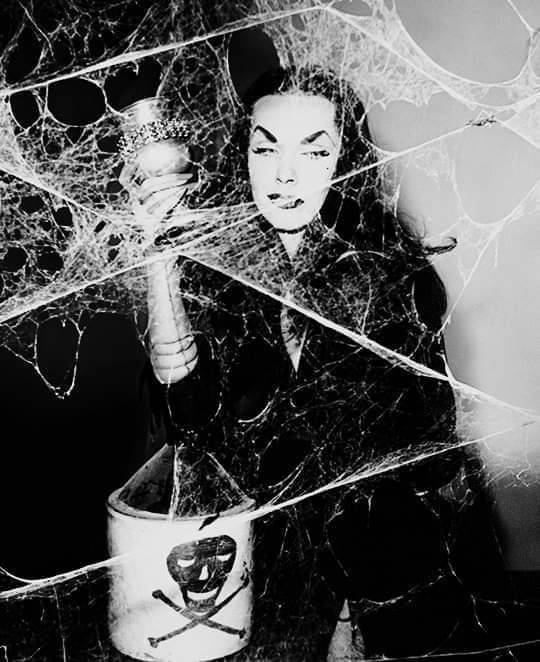

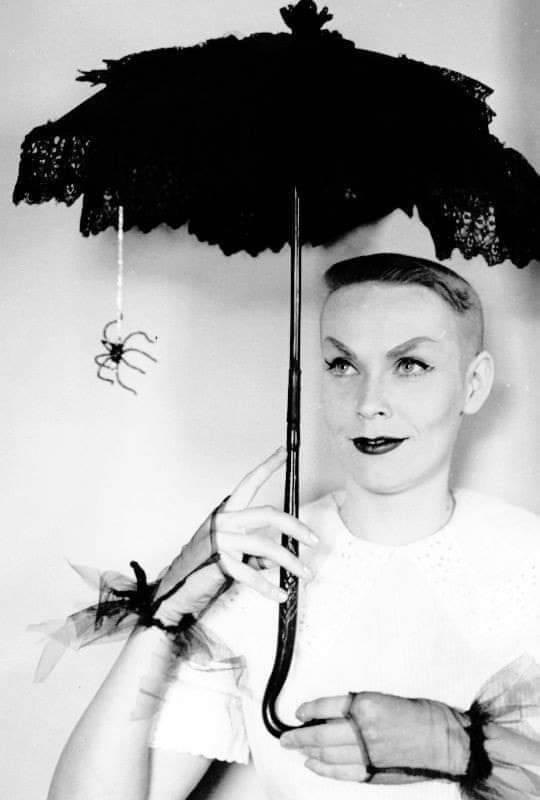

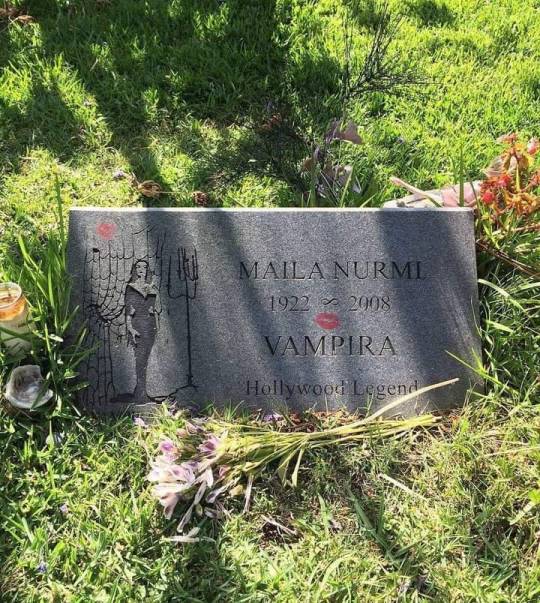
🦇Maila Nurmi 🦇
(December 11, 1922 - RIP January 10, 2008)
The original glamour ghoul herself, "Vampira", of late night 1950s television, was actually born Maila Syrjäniemi (later changed to the easier surname Nurmi) on December 11, 1922 in Petsamo, Finland. Her uncle was the multiple Olympic medal runner Paavo Nurmi. Maila arrived in the United States with her family as a baby and lived a rather nomadic existence at first as her father was a writer who lectured on temperance.
It was director Howard Hawks, of all people, who discovered Maila while she was performing in Mike Todd's Grand Guignol midnight show "Spook Scandals". Hawks escorted the lovely blonde beauty to Hollywood with the hopes of grooming her into the next Lauren Bacall. Cast in the film version of the Russian novel "Dreadful Hollow", the project was put on hold so many times that Maila walked out of her contract in frustration. She became a cheesecake model and an Earl Carroll dancer for several years in his revues, sharing a chorus line at one time with future burlesque stripper Lili St. Cyr.
Married at the time to child actor-turned-screenwriter Dean Riesner, she came up with the idea of "Vampira" at a masquerade contest where she based her costume on Charles Addams' New Yorker cartoons. Heavily painted up with long fingernails, a mane of raven-colored hair, and slim-waisted black attire, the Morticia gimmick won the best costume award that night... and more. She caught the attention of local television and was placed under contract to Channel 7 in Hollywood to see if she could encourage late night viewers to stay up and watch its regular programming of cheapjack horror schlock. The macabre madam was a genuine hit (for one season, at least, in 1954-55), adding a sexy nuance and silly double entendres to her campy horror set.
She earned an Emmy Award nomination in 1954 for "Most Outstanding Female Personality". Fan clubs sprouted up all over the world. She appeared in "Life", "TV Guide" and "Newsweek" magazine articles, and could be seen around and about town and in Las Vegas judging contests and making variety special appearances. Songs were written about the "Queen of Horror". She even appeared with arms outstretched and ghoulishly attired in the worst cinematic failure of all time, Edward D. Wood Jr.'s Plan 9 from Outer Space (1957), as Bela Lugosi's zombie-like mate, for which she is infamously associated. Lugosi actually was a huge fan of hers and had always wanted to work with her. Wood shot some footage of her years later as a tribute to Lugosi (he died in 1956 during filming) and added it before the film's release.
By the late 1950s, Maila's extended "15 minutes" of fame was over. With her career at stake (pun intended), she stretched things out with haphazard appearances in abysmal movies [The Beat Generation (1959); Sex Kittens Go to College (1960)] before closing the lid permanently on "Vampira". In later years, Maila divorced her writer/husband and became passionately involved in animal protection rights. A painter on the sly, she created some "Vampira" portraits that became a collector's item. Living very modestly in Southern California, she appeared in a small gag cameo in the film I Woke Up Early the Day I Died (1998). Malia Nurmi died at age 85 of natural causes at her home in Los Angeles, California on January 10, 2008.
14 notes
·
View notes
Text

Tap pictures to enlarge
☝️ bases in the area. Admiral John Tovey, Home Fleet commander-in-chief, was told by the War Cabinet and Admiralty to prepare a sortie against harbours in Norway and Finland.
Tovey made it clear that he believed the risks posed by the operation, mounted at a time when the sun didn’t set in northern latitudes, outweighed its possible benefits. There was also the fact that Britain wasn’t at war with Finland to consider, Tovey argued, but he was overruled. ‘Force P’, centered around the carriers HMS Victorious and HMS Furious with multiple escorts, was assembled and set sail from Iceland on 26th July. Furious, tasked with attacking Petsamo, was detached on 28th July with the cruiser HMS Adventure, which would deliver a cargo of mines to the USSR.
On 30th July, Furious launched nine Albacores, nine Swordfish and six Fulmars against Petsamo. The Fulmars were, unusually, armed with bombs. The strike force found almost no shipping in the harbour, sinking a small steamer and launching their remaining torpedoes against the wooden jetties in the face of heavy AA fire. Bombs were dropped on oil tanks and a shipyard, to little effect. Bf109s then appeared on the scene, shooting down an Albacore and a Fulmar, while a second Fulmar was lost to engine failure.
As Victorious was preparing to launch her strike on Kirkenes, her task force was spotted by a Luftwaffe aircraft, negating any chance of surprise. The carrier launched a total of 20 Albacores from 827 and 828 Squadrons, escorted by 9 Fulmars from 809 Squadron. Though they flew at low altitude for as long as possible, the aircraft had to pass over mountains to attack the harbour, attracting heavy AA fire in the process.
Over the target, where once again few ships were present, the Albacores sank one vessel, damaged another and caused some damage to shore installations. But the price was heavy, as Bf109s and 110s were in the air and immediately attacked. The resulting one-sided combat led to the loss of 11 Albacores and two Fulmars, with almost all the remaining British aircraft damaged. Two Bf110s and a Bf109 were claimed to have been destroyed; some sources also state that a Junkers 87, returning from a mission against Soviet targets, was brought down by an Albacore.
The raids had resulted in the loss of twelve Albacores and four Fulmars, for little result. Nine men were killed and 27 taken prisoner; two more managed to reach Soviet territory after 48 hours in a dinghy. Tovey’s concerns had been fully justified, though at least the precious carriers had survived unscathed. During the return journey, Force P had been shadowed by a Dornier 18, but it was shot down by Sea Hurricanes.
2 notes
·
View notes
Photo
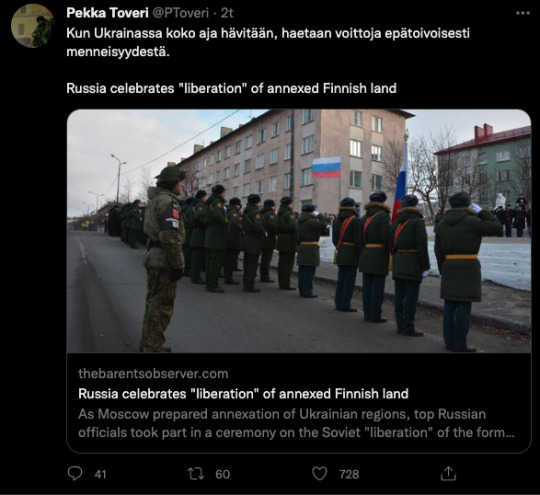
While constantly losing in Ukraine, Russia desperately seeks victories from the past.
Russia celebrates “liberation” of annexed Finnish land
Major General Pekka Toveri, former Director of Finnish Defence Intelligence

Read full article with photos here!
As Moscow prepared annexation of Ukrainian regions, top Russian officials took part in a ceremony on the Soviet "liberation" of the former Finnish town of Alakurtti in 1944.
“We will always remember the ones that gave us the opportunity to live in a free country and we will never forget their courageous bravery,” said Irina Prosolenko.
Fuck. Off. “Liberation”? “Gave you the opportunity to live in a free country?” None of the Finnish population lives there anymore. Finland evacuated the entire region. You are all colonisers living in our homes.
Alakurtti was Finnish territory until Stalin on the 30th of November 1939 attacked the neighboring country and ultimately annexed major parts of its territory. The attack followed the Molotov-Ribbentrop pact, the so-called non-aggression agreement between the USSR and Nazi Germany that included a secret protocol on the former’s right to annex parts of Poland, the Baltic states and Finland. Among the ceded areas were the Karelian isthmus and the Salla area, including Alakurtti. Later, also the far northern Petsamo area was ceded.
Alakurtti is located about 50 km from the border to Finland. It has a population of about 5,500. During the Continuation War, Finnish and German forces regained control over the area, but were pushed back in fall 1944 and by mid September Alakurtti and the surrounding Salla area was again under Soviet control.
“These kind of events must be celebrated, because this is patriotism,” Prosolenko underlined in the TV interview. “As long as the memories live, also we live,” she added.
There are remarkable parallells between Moscow’s attack and annexation of Finnish lands in 1939 and early 1940s and today’s onslaught on Ukraine, and the locals that attended the recent event in Alakurtti were carefully reminded about the historical context. During the ceremony, not only Soviet warriors were honored, but also two Russian soldiers that recently had lost their lives in Ukraine were post-mortem awarded medals for bravery.
This is a blatant example of how in the Russian public sphere, official memorial ceremonies dedicated to The Great Patriotic War are now being used actively to legitimate the Russian onslaught on Ukraine. This narrative of continuity between the two wars is of course mythmaking and has nothing to do with the realities neither of the Second World War nor of the present Russian warfare in Ukraine. Still, the ceremony in Alakurtti very explicitly builds on this, honoring fallen soldiers of both wars in the same event and stating that both the Soviet soldiers of the Great Patriotic War and the Russian soldiers in today’s Ukraine sacrificed their lives “protecting the world from Nazism”.
There has come no official reaction to the event in Alakurtti from Finnish authorities. According to Ilkka Liikanen, Professor at the University of Eastern Finland, the event is unlikely to have been addressed to Finland in connection with its upcoming NATO membership.
“My guess is this is targeted more to domestic audiences, and at least I have not noticed that it would have been officially dealt with in Finland,” he says to the Barents Observer.
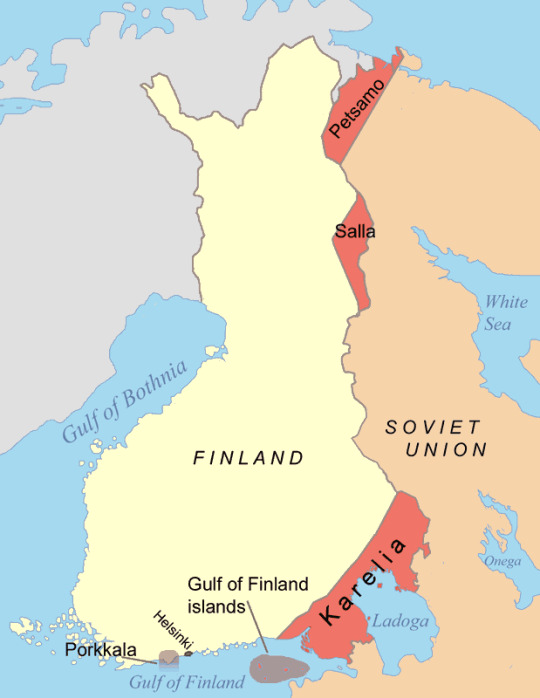
Enjoy some old photos of Alakurtti:

Alakurtti border guard station (x)
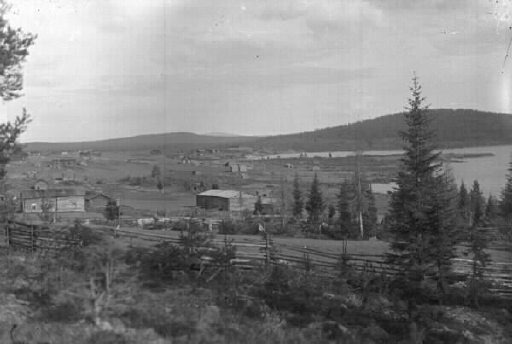
View from Palovaara fell towards Alakurtti village and Lake Ahkiojärvi (x)

On the new Voittotunturi fell maintenance road during the war (x)

Peurakoski rapids (x)
155 notes
·
View notes
Photo
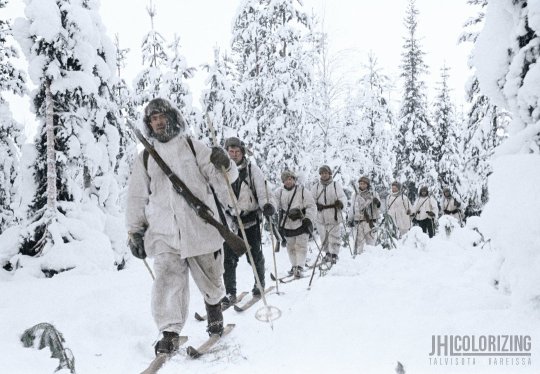
In the Winter War, Finland fought for its existence. Finland was prepared to go to war against the Soviet Union, but it was not prepared to fight the great power alone. The war began on 30 November 1939 without a preceding declaration of war. The home front was faced with the horrors of war on the very first day, when the enemy bombed 16 localities, including Helsinki, Viipuri, Turku, Lahti and Petsamo.
The 105 days of battle of the Winter War ended on 13 March 1940 in a peace treaty signed in Moscow the previous night.
Finland paid a high price for defending its independence. More than 26,000 Finns died in the war effort and about 44,000 were wounded. Civilian casualties numbered over 1,000. Soviet losses in the war were many times higher.
Ski patrol in Märkäjärvi, February 6, 1940
••••••••
Talvisodassa Suomi taisteli olemassaolostaan. Suomi oli varautunut sotaan Neuvostoliittoa vastaan, mutta ei ollut varautunut taistelemaan yksin suurvaltaa vastaan. Sota alkoi 30.11.1939 ilman sitä edeltävää sodanjulistusta. Kotirintama sai kokea sodan kauhuja heti alkamispäivänä, kun vihollinen pommitti 16:ta paikkakuntaa kuten Helsinkiä, Viipuria, Turkua, Lahtea ja Petsamoa.
Talvisodan 105 kunnian päivää kestäneet taistelut päättyivät 13.3.1940 edellisenä yönä Moskovassa solmittuun rauhansopimukseen.
Itsenäisyyden puolustaminen vaati raskaan uhrin. Sotatoimissa kaatui yli 26 000 suomalaista, noin 44 000 haavoittui ja yli 1000 siviiliä sai surmansa. Neuvostoliiton tappiot sotatoimissa olivat moninkertaiset.
Hiihtopartio Märkäjärvellä, 6.2.1940
••••••••
[ sa-kuva | 4706 | Valtioneuvoston viestintäosasto | Talvisotayhdistys ]
#ww2#wwII#WWII History#ww2 worldwar2 wwii#wwiihistory#worldwar2#worldwarii#worldwar#worldwartwo#history#war history#talvisota#sotahistoria#winterwar#Suomi#suomisodassa#colorized#jhlcolorizing#colorizing#colourised#colourized#salla#war
44 notes
·
View notes
Text

30th July, 1941: Operation EF, the Fleet Air Arm raid on Kirkenes (Norway) and Petsamo (Finland). Following the German invasion of the Soviet Union, with Finland supporting their offensive operations towards Murmansk, Britain had come under pressure to launch an attack on supply bases in the area. Admiral John Tovey, Home Fleet commander-in-chief, was told by the War Cabinet and Admiralty to prepare a sortie against harbours in Norway and Finland.
Tovey made it clear that he believed the risks posed by the operation, mounted at a time when the sun didn’t set in northern latitudes, outweighed its possible benefits. There was also the fact that Britain wasn’t at war with Finland to consider, Tovey argued, but he was overruled. ‘Force P’, centered around the carriers HMS Victorious and HMS Furious with multiple escorts, was assembled and set sail from Iceland on 26th July. Furious, tasked with attacking Petsamo, was detached on 28th July with the cruiser HMS Adventure, which would deliver a cargo of mines to the USSR.
On 30th July, Furious launched nine Albacores, nine Swordfish and six Fulmars against Petsamo. The Fulmars were, unusually, armed with bombs. The strike force found almost no shipping in the harbour, sinking a small steamer and launching their remaining torpedoes against the wooden jetties in the face of heavy AA fire. Bombs were dropped on oil tanks and a shipyard, to little effect. Bf109s then appeared on the scene, shooting down an Albacore and a Fulmar, while a second Fulmar was lost to engine failure.
As Victorious was preparing to launch her strike on Kirkenes, her task force was spotted by a Luftwaffe aircraft, negating any chance of surprise. The carrier launched a total of 20 Albacores from 827 and 828 Squadrons, escorted by 9 Fulmars from 809 Squadron. Though they flew at low altitude for as long as possible, the aircraft had to pass over mountains to attack the harbour, attracting heavy AA fire in the process.
Over the target, where once again few ships were present, the Albacores sank one vessel, damaged another and caused some damage to shore installations. But the price was heavy, as Bf109s and 110s were in the air and immediately attacked. The resulting one-sided combat led to the loss of 11 Albacores and two Fulmars, with almost all the remaining British aircraft damaged. Two Bf110s and a Bf109 were claimed to have been destroyed; an unlucky Junkers 87, returning from a mission against Soviet targets, was brought down by an Albacore.
The raids had resulted in the loss of twelve Albacores and four Fulmars, for little result. Nine men were killed and 27 taken prisoner; two more managed to reach Soviet territory after 48 hours in a dinghy. Tovey’s concerns had been fully justified, though at least the precious carriers had survived unscathed. During the return journey, Force P had been shadowed by a Dornier 18, but it was shot down by Sea Hurricanes.
Pictured:
1) HMS Furious in heavy weather. She was only the third Royal Navy vessel to be converted to an aircraft carrier, in 1921-25, yet saw active service until late 1944.
📷 naval-history.net
2) Fairey Albacore from HMS Victorious ‘somewhere off Norway’.
📷 IWM A 21745

3) Fairey Fulmar on the deck of HMS Victorious in Scapa Flow.
📷 IWM A 7003

4) Fleet Air Arm prisoners from Operation EF pictured at Malmi, August 3rd 1941.
📷 fleetairarmoa.org

0 notes
Note
"labelled with the biggest contributing border changes"
Luovutettu Karjala on varmaankn isompi ku Petsamo.
no joo, petsamo on yli puolet pienempi ollu ku luovutettu karjala


#aioin alkaa jotain selittämään jäämerestä ja siitä nikkelikaivoksesta mut sitte hoksasin että tästä ei ollu siinä kyse#mutta olihan kaikki venäjälle menetetyt alueet kumminki 11 prosenttia silloisesta pinta-alasta :/#owonswers to asks
0 notes
Photo

1944 10 20 Petsamo - Graham Turner
10 notes
·
View notes